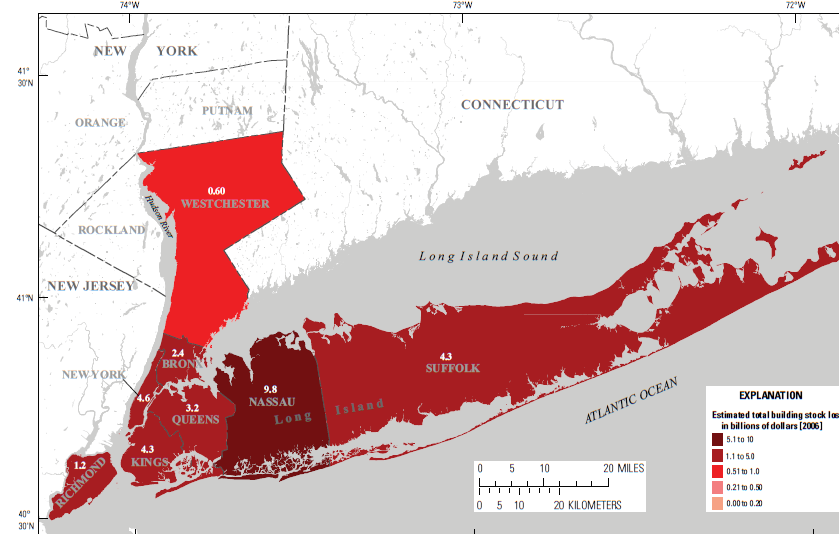An innovative study by the USGS, in coordination with FEMA, looked at damage estimate increases in several New York counties following Hurricane Sandy. The study reviewed building damage estimates at storm landfall, two weeks after the storm, and three months later. Hazus estimated the final damage costs in New York to be approximately $23 billion, but estimates varied dramatically through time, according to the accuracy of available hazard inputs. The largest difference in cost estimates occurred between the initial estimate and the two-week mark. At the three-month review, the estimate was more defined because additional information was available.

Tools such as tide gauges, stream gauges, temporary sensors, and high water marks were used to measure the intensity of Hurricane Sandy. The timing of storm onset drove significant variations in flood levels: Atlantic-facing parts of New York City and Long Island experienced peak storm surge during high tide – 5 to 6 feet higher than would have been experienced at low tide.
This research shows the value of pre- and post-storm data for impact analysis. It also confirms that increased data resolution is important for more accurate flood delineations and damage estimates in the weeks and months following a disaster. Improved damage estimates help FEMA and other stakeholders allocate response and recovery resources throughout the emergency management timeline, as more data become available.
Read the full article online in Analysis of Storm-Tide Impacts from Hurricane Sandy in New York, SIR 2015-5036, by C.E. Schubert, R. Busciolano, P.P. Hearn Jr., A.N. Rahav, R. Behrens, J. Finkelstein, J. Monti Jr., and A. E. Simonson.

